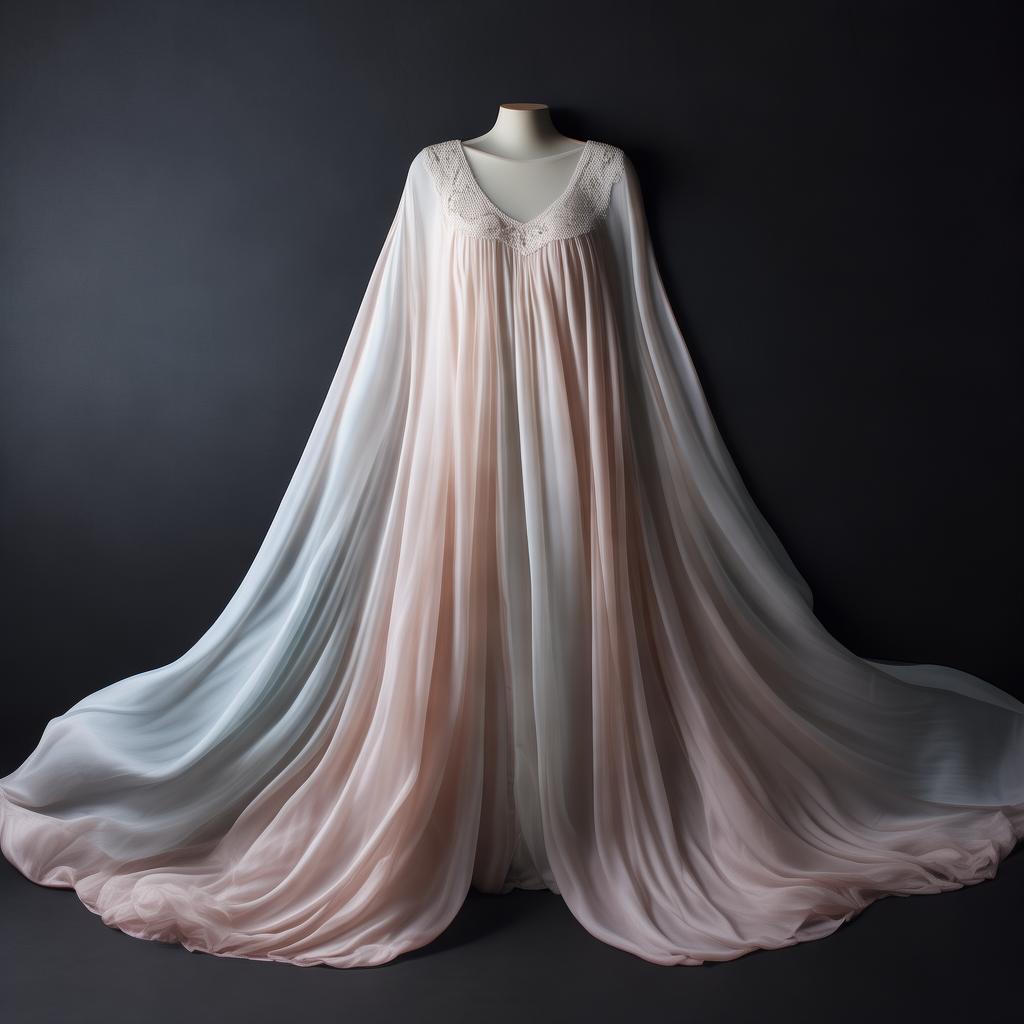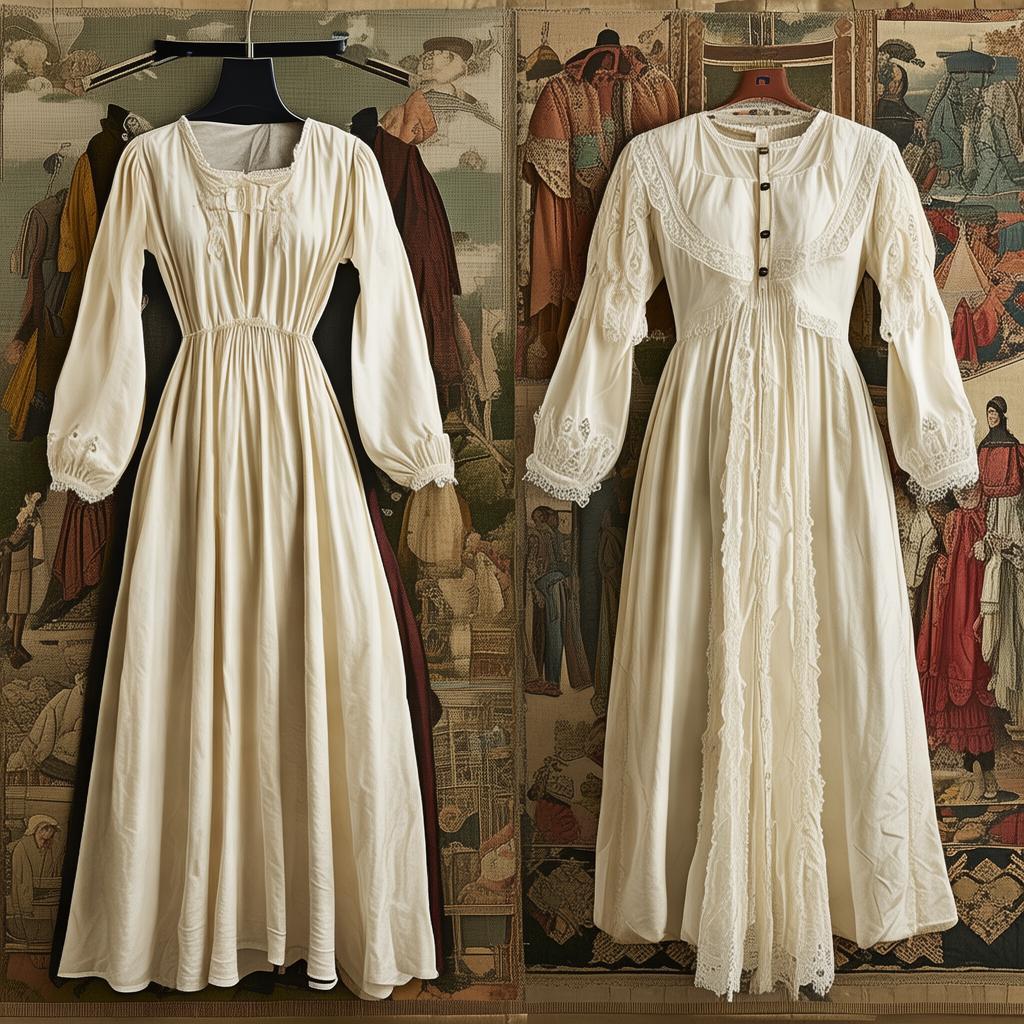What is the difference between a chemise and a nightdress?
The primary difference between a chemise and a nightdress lies in their design, intended use, and historical context. A chemise is typically a loose-fitting garment worn as underwear, while a nightdress is a more formal piece designed for sleepwear.
Why does it matter?
Understanding the nuances between these two garments can provide insight into the evolution of fashion and personal style. As a professional in the field of fashion history and textile analysis, I often encounter questions about the differences between these two items. Let's delve deeper into the characteristics that set them apart.
1. Design and Construction:
- Chemise: A chemise is usually made of lightweight fabric, such as cotton or silk, and features a loose, flowing silhouette. It often has a high neck and long sleeves, and may or may not have a lace trim. The garment is designed to be worn as underwear, providing modesty and comfort.
- Nightdress: A nightdress, on the other hand, is typically more structured and may have a fitted bodice, a higher waistline, and shorter sleeves. It can be made of various fabrics, including cotton, silk, or lace, and often features decorative elements like embroidery or lace.
2. Intended Use:
- Chemise: As mentioned earlier, a chemise is primarily designed as underwear. It serves the purpose of providing comfort and modesty, and is often worn under outer garments.
- Nightdress: A nightdress is specifically designed for sleepwear. It is meant to be comfortable and allow for ease of movement during the night.

3. Historical Context:
- Chemise: The chemise has a long history, dating back to ancient times. It evolved from a simple garment worn by both men and women to a more refined piece of women's underwear during the 18th and 19th centuries.
- Nightdress: The nightdress, as a distinct garment, became popular during the 19th century. It was a symbol of luxury and elegance, often worn by the upper classes.
Additional Questions and Answers:
-
Q: Are chemises and nightdresses always made of the same fabric? A: No, chemises and nightdresses can be made of various fabrics, depending on the intended use and style. However, cotton and silk are common choices for both garments.
-
Q: Can a chemise be worn as sleepwear? A: Yes, a chemise can be worn as sleepwear, especially if it is made of comfortable and breathable fabric.
-
Q: Are chemises and nightdresses always white? A: While white is a traditional color for both garments, they can be found in various colors and patterns, depending on personal preference and fashion trends.
-
Q: Do chemises and nightdresses have any cultural significance? A: Yes, both garments have cultural significance. In some cultures, the chemise is a symbol of modesty and purity, while the nightdress can represent luxury and elegance.
-
Q: Are chemises and nightdresses still worn today? A: Yes, both garments are still worn today, although they may be more commonly found in vintage or specialty stores. They are often appreciated for their historical and cultural significance.
Conclusion:
In conclusion, the difference between a chemise and a nightdress lies in their design, intended use, and historical context. By understanding these distinctions, we can appreciate the evolution of fashion and the role these garments have played in shaping personal style throughout history.

As a professional in the field of fashion history, I am often intrigued by the stories behind these garments. The chemise and the nightdress are not just pieces of clothing; they are windows into the past, reflecting the social norms, cultural values, and aesthetic preferences of their respective eras.
4. The Evolution of Sleepwear:
-
Q: How has the design of nightdresses evolved over time? A: The design of nightdresses has evolved significantly over time. In the 19th century, nightdresses were often elaborate, with high necklines and long sleeves. By the 20th century, they became more relaxed, with shorter sleeves and lower necklines. Today, nightdresses come in a wide range of styles, from the traditional to the avant-garde, reflecting contemporary fashion trends.
-
Q: Have chemises influenced modern underwear design? A: Absolutely. The chemise has had a lasting impact on modern underwear design. Many contemporary underwear styles, such as the camisole and the tank top, can trace their origins back to the chemise. The emphasis on comfort and modesty in the design of the chemise has influenced the way we think about underwear today.
5. The Role of Fabric in Sleepwear:
-
Q: What fabrics are most commonly used in modern nightdresses? A: Modern nightdresses are often made from soft, breathable fabrics like cotton, silk, and bamboo. These materials are chosen for their comfort and ability to regulate body temperature during sleep.
-
Q: Are there any health benefits to wearing certain types of nightwear? A: Yes, certain types of nightwear can offer health benefits. For example, silk nightdresses are known for their hypoallergenic properties and ability to reduce skin irritation. Cotton nightdresses are also beneficial for their breathability and moisture-wicking capabilities.
In the end, whether we are discussing the historical significance of the chemise or the contemporary appeal of the nightdress, the message remains the same: these garments are more than just fabric; they are expressions of identity, comfort, and style. As we continue to explore and appreciate the nuances of these pieces, we gain a deeper understanding of the human experience and the ever-evolving world of fashion.